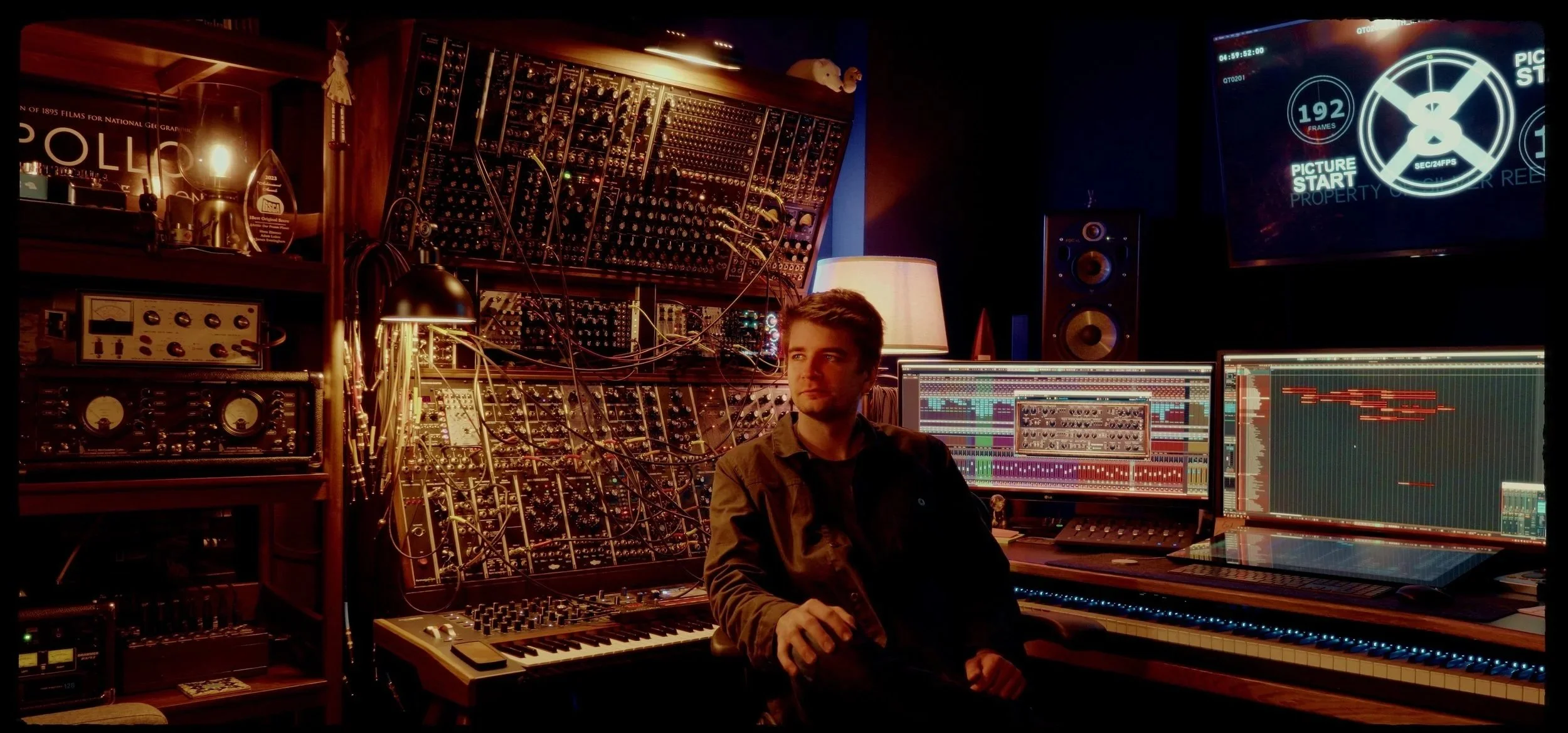Composer James Everingham Captures Hawaiian Heritage in “Chief of War”
James Everingham didn’t set out to be a film composer, but at seventeen, he found himself at Abbey Road, recording his first feature score. Since then, he’s spent ten years collaborating with Hans Zimmer, won a Televisual Bulldog Award for BBC's Frozen Planet II, and working in the worlds of film, TV, and video games. Everingham is once again teaming up with Zimmer for the score of the Apple TV+ series Chief of War.
Led by Jason Momoa, Chief of War is a Hawaiian historical drama series about the four major kingdoms of the Hawaiian Islands at the end of the 18th century. Momoa plays Kaʻiana, a warrior chief who left the islands to travel around the world. When he returns, Kaʻiana rebels against the unification of Hawaiʻi under the rule of Kamehameha I.
Neither Everingham nor Zimmer are Hawaiian, so finding Hawaiian artists to collaborate with was essential. “It's turned out to be one of the most special projects of my career,” Everingham said. “The incredible thing about Chief of War is that it's so Polynesian-led. You've got Jason, who's Hawaiian himself, starring, directing, and producing it. It's a celebration of Hawaiian culture, really.”
“There's definitely this feeling of like, why me?” Everingham went on. “In those early stages, I'm doing my research. I'm trying to find information about traditional Hawaiian music. The sad reality is there's not a whole lot out there. The initial conversations we had with production showed we were immediately on the same page. The Hawaiian collaborators are going to be the key to the score. They're going to be the heart of the music.”
courtesy of James Everingham
In making Chief of War, Kaumakaiwa Kanakaʻole emerged as the heart of Everingham’s score. “Between Kaumakaiwa, the vocal groups she put together for us, and Pō and the 4Fathers, I really couldn't have asked for better collaborators,” Everingham emphasized. “Not just in performing on the score and providing us with the incredible performances and the voices in the instrumental process to record, but also the access to ask questions to explore more about Hawaiian culture, because those people are the experts.”
“Traditional Hawaiian music is very vocal. It's a lot of vocals and percussion. All the stories have been passed down orally through generations,” continued Everingham. “Song and art are such a huge part of that. My primary collaborator, Kaumakaiwa, and her entire family have dedicated their lives to preserving Hawaiian culture. Her great grandma was a seminal figure of the Hawaiian Renaissance. I think that yielded a really authentic Hawaiian element to the music.”
courtesy of Apple TV+
The score for Chief of War quickly became a labor of love and familial connections. The Hawaiian nose flute was played by Kawai Hoe, whose father’s archival recordings served as the inspiration for the early theme music. “I found some flute recordings on YouTube and I played them for Kawai,” Everingham recounted. “He listened to them and he immediately said, oh, that's my dad playing. It was quite surreal for him to be hearing his dad play and to be using that as a reference for his own performance and to continue the legacy of his family.”
Everingham taught himself drums as a teenager, and to have a chance to play around in the world of Hawaiian drums was a kid-in-a-candy-store moment for him. Everingham commissioned a Puniu, one of the most prominent percussion instruments on the score. “It's a small drum that‘s strapped to the knee and used traditionally in hula performance,” explained Everingham.
Hawaiian culture is not the only source of inspiration for Chief of War, as a major plot point for the series is the influence of outside colonials coming to the islands. The show spans roughly thirty years, and you can hear the changes echoing through the score.
courtesy of Apple TV+
“We begin with Hawaiian vocals. The main title opens with Hawaiian vocals. The deeper we get into the series, the more that soundscape opens up, right?” Everingham asked. “We see the colonists, we go to Zamboanga. We have a completely different sound palette for that region. That seeps back into the school when we return to the islands.”
“By episode nine, the gloves are off and you've got electronics, you've got a full orchestra. There's Hawaiian instrumentation as well, because by that point the full ensemble cast have come together.”
Ultimately, Chief of War is something beyond a TV series. “We put a lot of blood, sweat, and tears into this. It's a huge moment for Hawaiian culture,” Everingham emphasized. “So many people have never heard the Hawaiian language. Even Hawaiian speakers have never seen a show of this scale spoken in the Hawaiian language.”
“Whatever I can do, whatever my part is to be able to amplify this moment for Hawaiian culture, I'm excited for the world to see it.”
Support Your Local Film Critic!
~
Support Your Local Film Critic! ~
Beyond the Cinerama Dome is run by one perpetually tired film critic
and her anxious emotional support chihuahua named Frankie.
Your kind donation means Frankie doesn’t need to get a job…yet.
Follow me on BlueSky, Instagram, Letterboxd, YouTube, & Facebook. Check out Movies with My Dad, a new podcast recorded on the car ride home from the movies.



